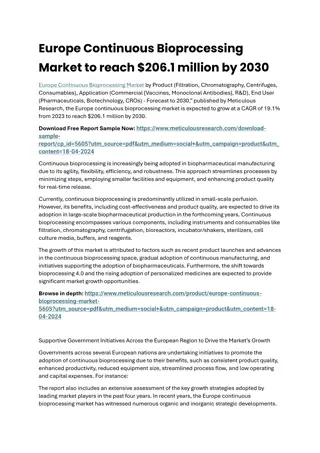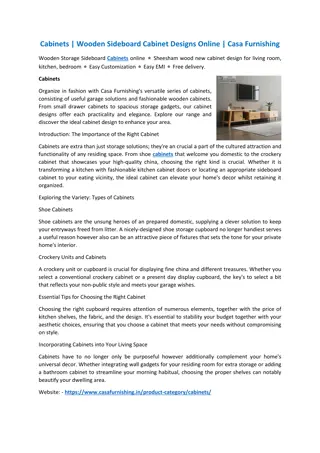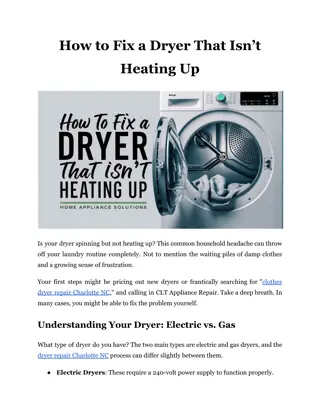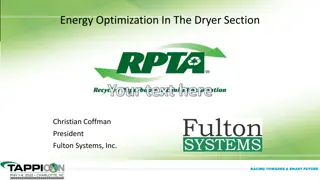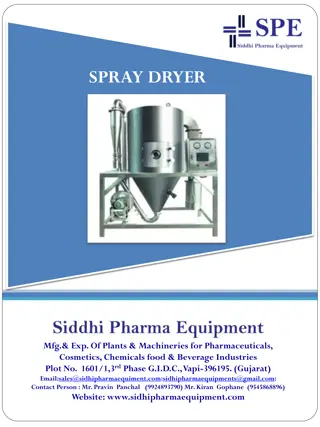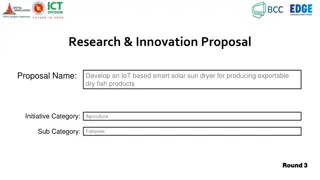
Understanding Mass and Energy Balances in Continuous Dryers
Explore the concepts of mass balance, energy balance, and enthalpy in continuous dryers. Learn how to calculate air flow rate and exit humidity ratio in a practical numerical example. Gain insights into the process of drying products efficiently and effectively.
Download Presentation

Please find below an Image/Link to download the presentation.
The content on the website is provided AS IS for your information and personal use only. It may not be sold, licensed, or shared on other websites without obtaining consent from the author. If you encounter any issues during the download, it is possible that the publisher has removed the file from their server.
You are allowed to download the files provided on this website for personal or commercial use, subject to the condition that they are used lawfully. All files are the property of their respective owners.
The content on the website is provided AS IS for your information and personal use only. It may not be sold, licensed, or shared on other websites without obtaining consent from the author.
E N D
Presentation Transcript
Dr. J. Badshah University Professor cum - Chief Scientist Dairy Engineering Department Sanjay Gandhi Institute of Dairy Science & Technology, Jagdeopath, Patna (Bihar Animal Sciences University, Patna)
Mass balance and Energy Balance in Counter-current Continuous cabinet Dryers 2 1 Air Out, ma Air In ma Product Out, mp Product In, mp Moisture Balance: Moisture In = Moisture out maH2 + mpw1= maH1+ mpw2 Where, ma= Air flow rate (kg dry air / h), mp= Product flow rate (kg dry solids / h) , H = Absolute humidity (kg water / kg dry air) and w = Product moisture content (kg water / kg solid) Ta= Temperature of air ( C) Tp= Temperature of product ( C ) and 1 is inlet condition; and 2 is the outlet condition. Energy balance : Energy In = Energy Out maHa2+ mpHp1= maHa1+ mpHp2+ Q Where, Q= Heat losses from dehydration system, Ha= Heat content of air (kJ / kg dry air) and Hp= Heat content of product (kJ / kg dry solids).
Enthalpy of Product determination Considering 0 C as the reference temperature the expressions for heat content of air and product are : Ha= Cs (TA T0)+ H (L0), where Cs= 1.005 +1.88 H and L0= 2500.5 at T0 = 0 C Hp= Cps(Tp- T0 ) + w Cpw(Tp- T0) Where, Cps Specific heat of product solids (kJ /kg K) Cpw Specific heat of water (kJ /kg K), Tp Product temperature. T0 =0 C Using these equations, the quality of air required for drying an established amount of product over known moisture content range can be determined. In addition, for known inlet conditions of air, the moisture characteristics of airat the systemoutletcan be established.
Numerical on Continuous Dryer A continuous dryer is being operated counter-currently to dry a product 0.2 kg water per kg dry solid to final moisture content of 0.05 kg water/kg kg dry solid. The feed rate is 500 kg dry solid/hr. The solid product enters the dryer at 20 C and products at 70 C. The heat capacity of drying solid is 2.0 KJ/kg C. The drying air enters at 95 C with 0.005 kg water / kg dry air and moist air exits at 45 C. If the specific heat of the product is assumed as constant and there is no heat loss from dryer, calculate theair flow rateand theexit humidity ratioof air. Solve It.




